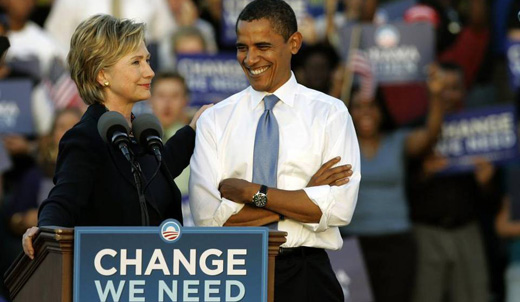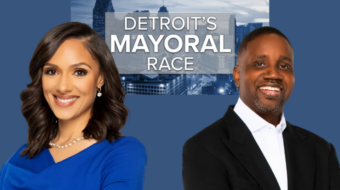
Many GOP elected officials, Republican National Committee members, and conservative newspaper and journal writers vowed not to support real estate mogul Donald Trump when he announced his candidacy last June. However, one needs a scorecard, or maybe a Jumbotron, to keep track of which of these “leaders” has caved in and now back him. It is further evidence of the GOP’s character and its continual drift toward the extreme right.
On the Democratic side, the fact that the contest between Secretary Hillary Clinton and Senator Bernie Sanders continues has dismayed quite a few liberals and some voices on the left, in social movements, among elected officials, and in the media. However, as bad as it may seem to many, we are either even with, or actually ahead of the game on building unity when compared to 2008.
This was all captured in a segment entitled, “What the 2008 Democratic primary looked like at this moment,” on All In with Chris Hayes last Friday (May 20). Guest host Steve Kornacki delivered very helpful reminders of the primary battle eight years ago.
In late May 2008, then-Senator Clinton wrote a letter to superdelegates asking for their support despite the near-certainty that she would have fewer pledged delegates going into the convention. Why? She argued that polls demonstrated she would be a better opponent against Senator John McCain. In a speech as late as May 28, 2008, former President Bill Clinton continued to argue that Senator Clinton was the better general election choice.
The same month she made the ghastly point that she should stay in, since in 1968, the frontrunner, Senator Robert Kennedy, was assassinated in June of that year’s race. Clinton apologized, but vowed to stay in the race until the convention. She reminded audiences that some did not want her to enter the race in the first place. And indeed, not until two days after the media declared then-Senator Obama the winner after the two last primaries, Montana and South Dakota on June 3, did Senator Clinton suspend her campaign and endorse Obama.
Fast forward to the present. Senator Sanders is trying to woo superdelegates. He’s pointing to his greater lead in national polls over Trump compared to Clinton’s. And likewise, he vows to stay in the race until the Democratic convention in Philadelphia. Remarkably similar – despite the outcry that what is going on now is unique.
However bruising the contest seems to be this year, organizations and individuals for equality and greater democracy could be considered ahead of the pace. In May 2008, according to a New York Times/CBS News poll, 60 percent of Clinton’s supporters said they were willing to vote for Barack Obama if he became the nominee. In May of this year, 72 percent of Sanders’ supporters told the same polling outfit that they would vote for Secretary Clinton against Trump.
Moreover, the Democratic National Committee, fully aware of the critical importance of Sanders’ voters, has offered an olive branch via a significant minority of seats on the Platform Committee for the convention-Sanders supporters will have five seats, compared to Clinton’s six, while four will be filled by DNC Chair Debbie Wasserman Schultz.
Sanders has named Dr. Cornel West, Rep. Keith Ellison (D-Minn.), Native American activist Deborah Parker, Arab American Institute head and DNC member James Zogby, and author and environmentalist Bill McKibben as his representatives in the platform drafting process. Sanders has also changed some of his tone regarding Clinton, albeit perhaps unevenly so far.
Counteracting the danger presented by the Republican Party will require the broadest, most inclusive unity of the working class and all progressive social reform movements. A Republican victory for the presidency would mean the continuation of a right-wing Supreme Court for years into the future. Controlling both houses of Congress and the White House would result in massive setbacks to our labor movement, African-American and Latino equality, and all social movements seeking greater democracy: women’s equality, youth, LGBT, seniors, the disabled, peace, environment, housing…you name it.
Careful analysis of the electoral college map, from the very conservative RedState to the moderate liberal Juan Williams leads to very hopeful outcomes for progressives.
The last thing we should be however, especially this early, is overconfident. Nonetheless, as Kornacki said Friday, according to the May polling numbers, “You can’t say it’s worse now than it was in 2008, even if it doesn’t feel that way.”
So there is no reason to panic yet.
Photo: Senators Hillary Clinton and Barack Obama appear together at a unity rally on October 20, 2008 in Orlando, Florida. | John Raoux / AP










